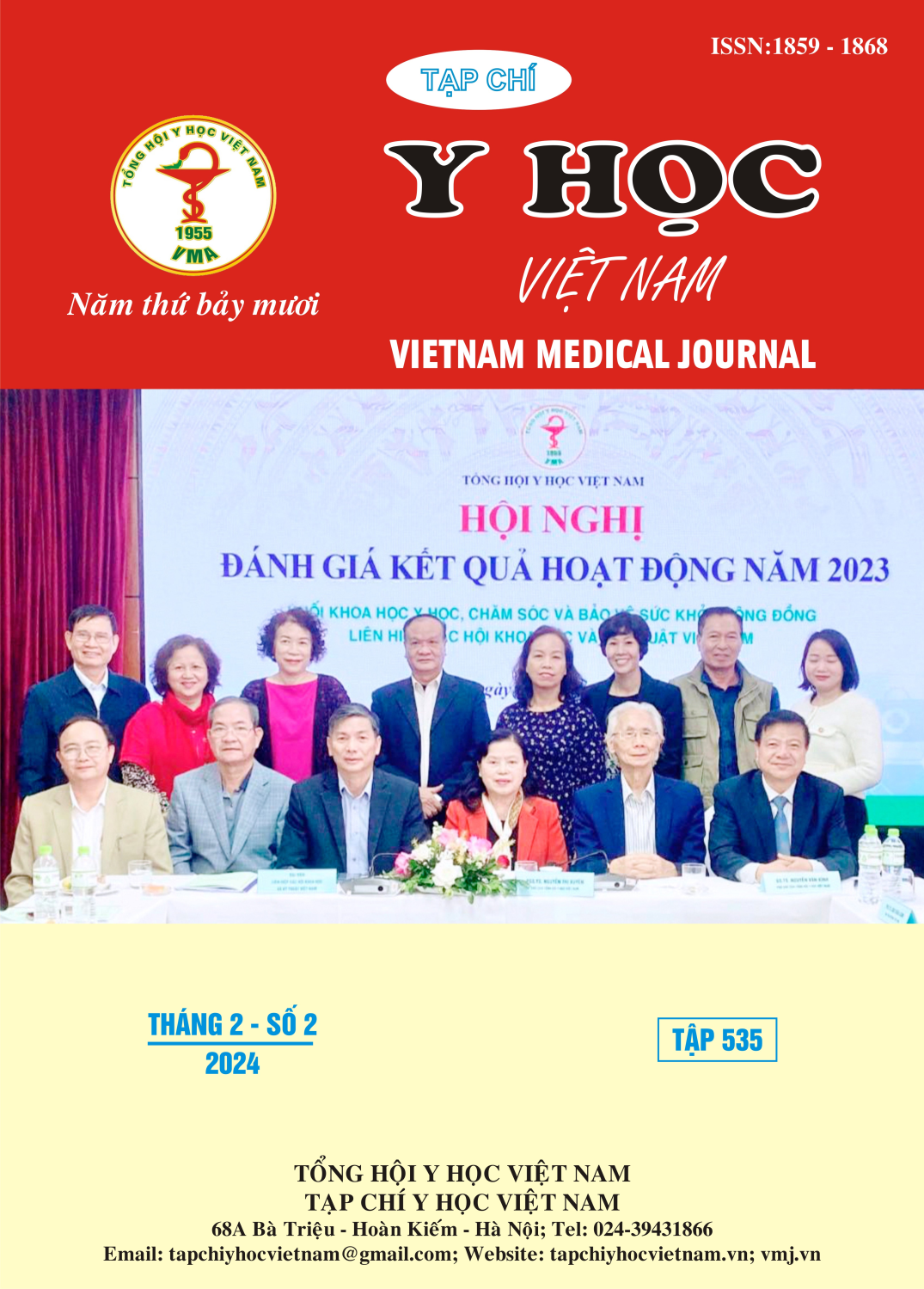GRADING ACTIVITY AND SEVERITY IN THYROID EYE DISEASE BY USING CLINICAL CLASSIFICATION
Main Article Content
Abstract
Purpose: Assessing clinical features and applying VISA and EUGOGO classification to evaluate activity and severity of thyroid eye disease (TED) in patients examined at Vietnam National Eye Hospital. Methods: Prospective, descriptive study performed on 40 patients at Vietnam National Eye Hospital from December 2022 to September 2023. Results: Mean age of onset was 47.9 ± 12.4,mainly from 41 to 60 years old with a female predominance, mostlyoccuring in Basedow’s disease and hyperthyroidism with a range of symptoms. In 77.5% of cases, VISA and EUGOGO classification evaluated the same activity. Although VISA had higher activity score, EUGOGO tended to classify more active cases. After 3 months, with VISA classification, 25% of patients had progressed; the greatest progression was observed in motility restriction, while diplopia and appearance/exposure symptoms showed minimal progression. According to EUGOGO classification, the majority of patients have moderate to severe TED (65%), 25% have sight-threatening TED, 10% have mild TED, and most patients do not experience any change in severity after 3 months. The condition is primarily moderate to severe (22.5%) or sight-threatening (22.5%) during the active phase. It tends to be milder in the inactive phase, mostly mild (10%) or moderate to severe (42.5%). Conclusion: Thyroid eye disease is a common orbital disease with a variety of manifestations. Assessing activity and severity plays an important role in thyroid eye disease management
Article Details
Keywords
Thyroid eye disease, EUGOGO, VISA.
References
2. Dolman PJ. Evaluating Graves’ orbitopathy. Best Pract Res Clin Endocrinol Metab. 2012;26(3):229-248.
3. Terwee CB, Prummel MF, Gerding MN, Kahaly GJ, Dekker FW, Wiersinga WM. Measuring disease activity to predict therapeutic outcome in Graves’ ophthalmopathy. Clin Endocrinol (Oxf). 2005;62(2):145-155.
4. Barrio-Barrio J, Sabater AL, Bonet-Farriol E, Velázquez-Villoria Á, Galofré JC. Graves’ Ophthalmopathy: VISA versus EUGOGO Classification, Assessment, and Management. J Ophthalmol. 2015;2015:249125.
5. Prummel MF, Bakker A, Wiersinga WM, et al. Multi-center study on the characteristics and treatment strategies of patients with Graves’ orbitopathy: the first European Group on Graves’ Orbitopathy experience. Eur J Endocrinol. 2003;148(5):491-495.
6. Lim NCS, Sundar G, Amrith S, Lee KO. Thyroid eye disease: a Southeast Asian experience. Br J Ophthalmol. 2015;99(4):512-518.
7. Eckstein A. Impact of smoking on the response to treatment of thyroid associated ophthalmopathy. British Journal of Ophthalmology. 2003;87(6):773-776.
8. Bartley GB, Fatourechi V, Kadrmas EF, et al. Clinical Features of Graves’ Ophthalmopathy in an Incidence Cohort. American Journal of Ophthalmology. 1996;121(3):284-290.


